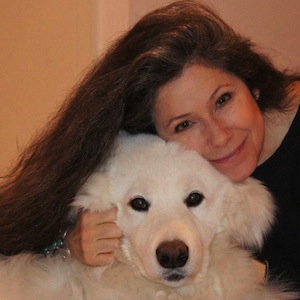Prose poetry isn’t as easy as it might look. I didn’t realize what tight control it can require until reading three recently published works by poet Susan Lewis, two of which are prose poetry and one of which is the more familiar verse style.
Lewis is an accomplished poet, having published numerous collections and chapbooks, including Animal Husbandry, Commodity Fetishism, The Following Message and At Times Your Lines, among others. Within the space of roughly a year, she published three books—two collections and a chapbook—and these are three I’ve recently read: How to Be Another, State of the Union and This Visit. Her poetry has been published in numerous literary journals and poetry publications.
The poetry in the three collections has a broad range of subjects—commercialism, food, environmental issues, language, relationships, to mention only a few—but each of the volumes reflects a similar voice, a voice utilizing an observant eye and an air of authority. Consider the title poem from How to Be Another:
Begin by cultivating sympathy for the food you torture. There it lies, splayed on your plate. Chew with open mouth if you want us to hear those tiny screams. This is about quantity as well as quality. Be bold—be brutal—rip your future from its birth throat. Then wash by heart, in cold blood. You might also stand in rich soil until you sprout roots, or jump off a cliff to stimulate wings. The chime of bells on your collar should prove festive & reassuring. Send home the evidence of your liberation in the language of stability, that old warhorse. Your memory will be stored in the proper receptacle. Close the window of your soul if you don’t want to catch its death.
Many of the poems in this collection ask the same question—how to understand, be sympathetic, truly grasp a different perspective or social class or even belief system. In this poem, Lewis uses the medium of food to suggest how understanding might be accomplished while simultaneously underscoring how difficult it is. The prose poetry form emphasizes that; the paragraphs suggest authority while what’s contained within them represents serious difficulty.
Similar themes are echoed in State of the Union, except they move even more in the direction of difficulty in understanding “otherness” or others by suggesting the difficulties in understanding ourselves. In one of the title poems, she uses the image of “Everyman’s dog” similarly to how she used food in the previous poem.
That Everyman’s dog barks everyhere, else pops
Prozac with his puppy chow. After heavy rain ancient
animosities blossom & bite. Another swell chance
to hoard junked foodstuffs + the gift of gas. Top
the food chain to find handcuffs—a sylvan hostage
situation, after which it’s one for all, all for one, +
anyone’s guilty guess. Tangled in this web of our
own mayhem, choked by too much and not enough,
looking to our slaves for affection and a workable
excuse.
Again I was struck by the tight control of the prose poetry form, or at least how Lewis employs it. This isn’t stream of consciousness poetry but poetry with words and images carefully and deliberately chosen.
In This Visit, Lewis provides a more familiar poetic form but the same voice prevails, with similar explorations of the themes of otherness and displacement.
from spark showers
thrown in this common lot,
toeing the line like a
snail’s trail guiding certain
eyes boring holes
through every question,
taking in &
hungering for more,
crying feed me,
purring lead me,
whisking fingers over
darkened brows,
setting the clock for
willy-nilly or doomsday
after vanishing
(not to put too fine a
point on what I mean)
by which I mean
a certain plummet,
a certain vortex,
the nexus between
anything & what follows,
that teasing retreat,
that beckoning—
plus you who
persevered & you who
followed the lines
to the point of pain
& hot convergence
until silence or
something final & light,
something of origin
something of
completion—
“Something of completion” indeed—with a hyphen at the end to suggest that there is no completion, no finality of understanding.
Lewis is the editor of the literary journal Posit. She received her MFA degree in creative writing from Sarah Lawrence University, and her BA and JD degrees from University of California, Berkeley. In addition to poetry, she writes flash fiction, which has been performed on stage in Denver, and compositions with other artists that have been performed at the Kennedy Center and Carnegie’s Weill Hall. She lives in New York City.
It is something of a skill to be able to write about the problem of otherness and understanding others within a framework of control and authority. But Lewis pulls it off, and she does it well.
Photo by Donnie Nunley, Creative Commons, via Flickr. Post by Glynn Young, author of the novels Dancing Priest and A Light Shining, and Poetry at Work.
___________________________

“I require all our incoming poetry students—in the MFA I direct—to buy and read this book.”
—Jeanetta Calhoun Mish
- Poets and Fables: Steven Flint and “The Sun and the Boy” - July 3, 2025
- Poets and Poems: Alison Blevins and “Where Will We Live if the House Burns Down?” - July 1, 2025
- Poets and Poems: Paul Pastor and “The Locust Years” - June 26, 2025





Donna Z Falcone says
Thank you for sharing Sharon Lewis with us, Glynn. The poems you’ve selected are almost haunting. That first one really evoked a lot of emotion. Poets who write so courageously can really help us see where our buttons are, don’t you think?
Susan Lewis says
Huge thanks to Glynn Young for this thoughtful and sympathetic review of my books! It is a pleasure and an honor to be read by such a wonderful reader!
Megan Willome says
Now this is a good poetry review, with no obnoxious words. 🙂